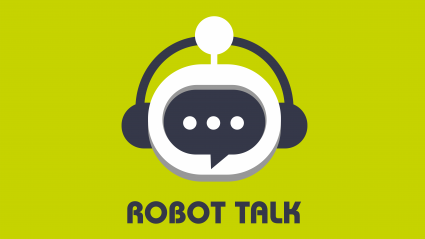TacticAI: an AI assistant for football tactics
TacticAI: an AI assistant for football tactics
TacticAI: an AI assistant for football tactics
TacticAI: an AI assistant for football tactics
TacticAI: an AI assistant for football tactics
TacticAI: an AI assistant for football tactics
An AI robot is spotting sick tulips to slow the spread of disease through Dutch bulb fields
When You Need a Clutch Performer, Rent a Robot
Self-organizing robotic aggregate design inspired by flowing and rigid behaviors of sandpiles
Open Robotics Launches the Open Source Robotics Alliance

The Open Source Robotics Foundation (OSRF) is pleased to announce the creation of the Open Source Robotics Alliance (OSRA), a new initiative to strengthen the governance of our open-source robotics software projects and ensure the health of the Robot Operating System (ROS) Suite community for many years to come. The OSRA will use a mixed membership and meritocratic model, following other successful foundations for open-source projects, including The Linux Foundation and the Eclipse Foundation.
The OSRA is extending an open invitation to all community stakeholders to participate in the technical oversight, direction, development, and support of the OSRF’s open source projects – ROS, Gazebo, Open-RMF, and their infrastructure. Involvement across the robotics ecosystem is crucial to this initiative.
The center of the OSRA will be the Technical Governance Committee (TGC), which will oversee the activities of various Project Management Committees, Technical Committees, Special
Interest Groups, and Working Groups. As a charitable program of the OSRF, overall responsibility for the OSRA remains with the OSRF Board.
The Alliance has received early support for our vision from prominent organizations such as NVIDIA, our inaugural Platinum member.
“NVIDIA develops with ROS 2 to bring accelerated computing and AI to developers, researchers, and commercial applications,” said Gordon Grigor, VP Robotics Software, NVIDIA. “As an inaugural platinum member of OSRA, we will collaborate to advance open-source robotics throughout the ecosystem by aiding development efforts, and providing governance and continuity.”
Intrinsic also continues its support of Open Robotics with its inaugural Platinum membership. “From the numerous contributions made by our team at Intrinsic across projects like ROS, Gazebo, and Open-RMF as part of the Open Robotics community, to our acquisition of the Open Source Robotics Corporation (OSRC), we’ve invested deeply in the open source community, and we look forward to continuing our support of the ecosystem as an inaugural member of the OSRA,” said Wendy Tan White, CEO of Intrinsic. Qualcomm Technologies rounds out the inaugural Platinum membership group and signals its commitment to open source robotics as well.
“Qualcomm Technologies is excited to join the Open Source Robotics Alliance (OSRA) to help drive the development of open-source robotics software and foster the growth of the vibrant ROS Suite developer community,” stated Dev Singh, Vice President of Business Development and Head of Robotics & Industrial Automation at Qualcomm Technologies. “Leveraging our longstanding history in on-device AI processing and heterogeneous computing, our comprehensive family of robotics platforms addresses all types of robots to deliver the benefits of AI at the edge.”
NVIDIA, Intrinsic, and Qualcomm Technologies join nine other inaugural members at press time, including Gold members Apex.ai and Zettascale, Silver members Clearpath Robotics, Ekumen, eProsima, and PickNik, and Associate member Silicon Valley Robotics. Initial Supporting Organizations include Canonical and Open Navigation. Incoming members include Bosch and ROS-Industrial, and several others to be announced soon.
Membership applications are now open for organizations and individuals interested in joining the OSRA and supporting the future of open source robotics. Instructions on how to apply and information on the member levels and benefits are available at www.osralliance.org.
About Open Robotics: Open Robotics is the umbrella term for the Open Source Robotics Foundation (OSRF) and its initiatives. Founded in 2012, the OSRF is a California nonprofit public benefit corporation exempt under Section 501(c)(3) of the Internal Revenue Code. Its flagship open-source robotics software, ROS, is the world’s most widely adopted robotics framework suite. For more information about its new OSRA initiative, please visit www.osralliance.org.
Robot Talk Episode 77 – Patricia Shaw

Claire chatted to Patricia Shaw from Aberystwyth University all about home assistance robots, and robot learning and development.
Patricia Shaw is a Senior Lecturer in Computer Science and Robotics at Aberystwyth University. Her current research interests include technology for assistive living and she is currently leading on establishing a new Smart Home Lab at the university. This new lab will be used to research, develop and test a wide range of sensing technology for monitoring activities in the home as well as robots ranging from companions to assistants around the home. She strongly supports public engagement and has been coordinating regional robotics week events for the last 6 years.